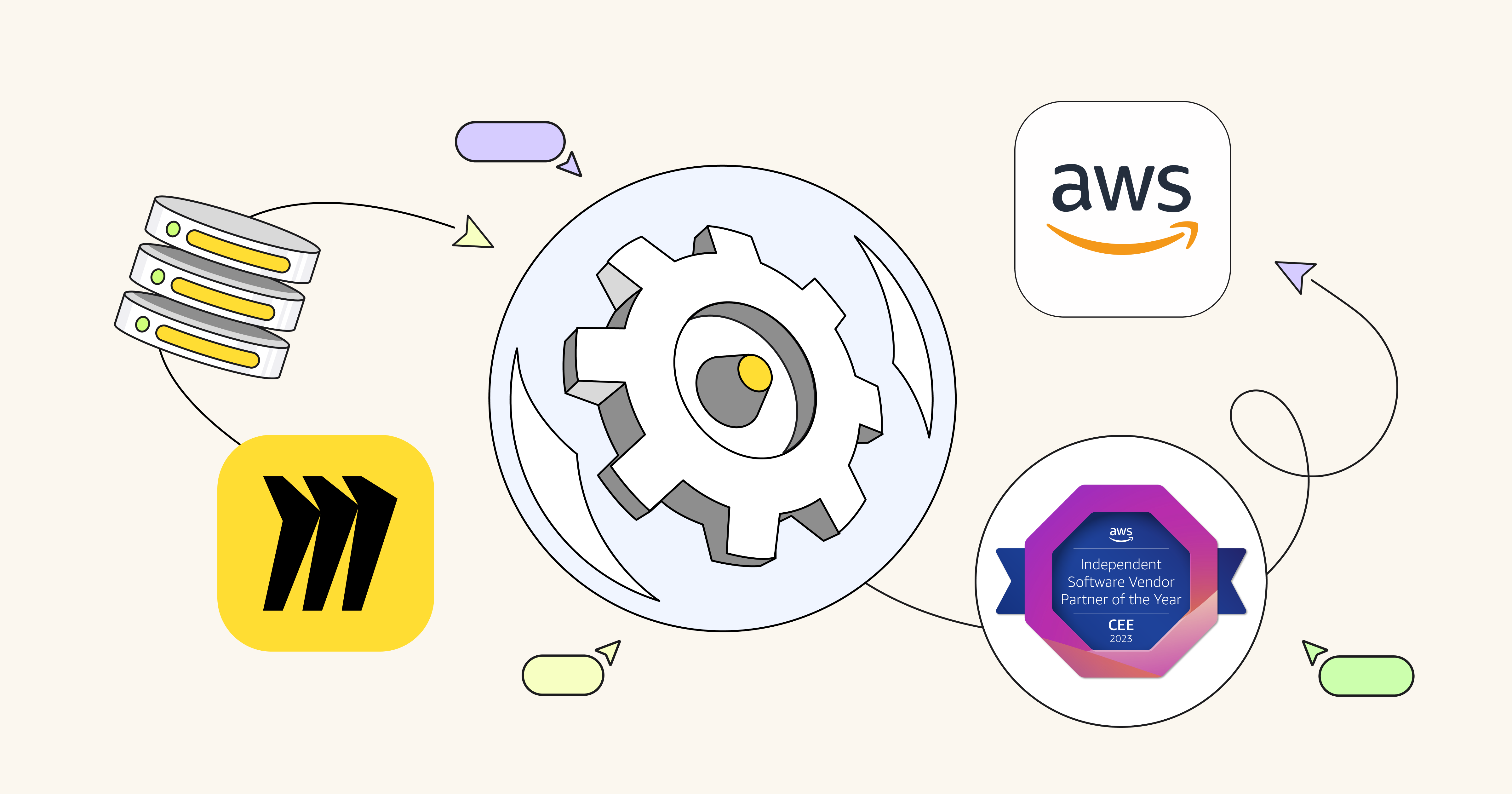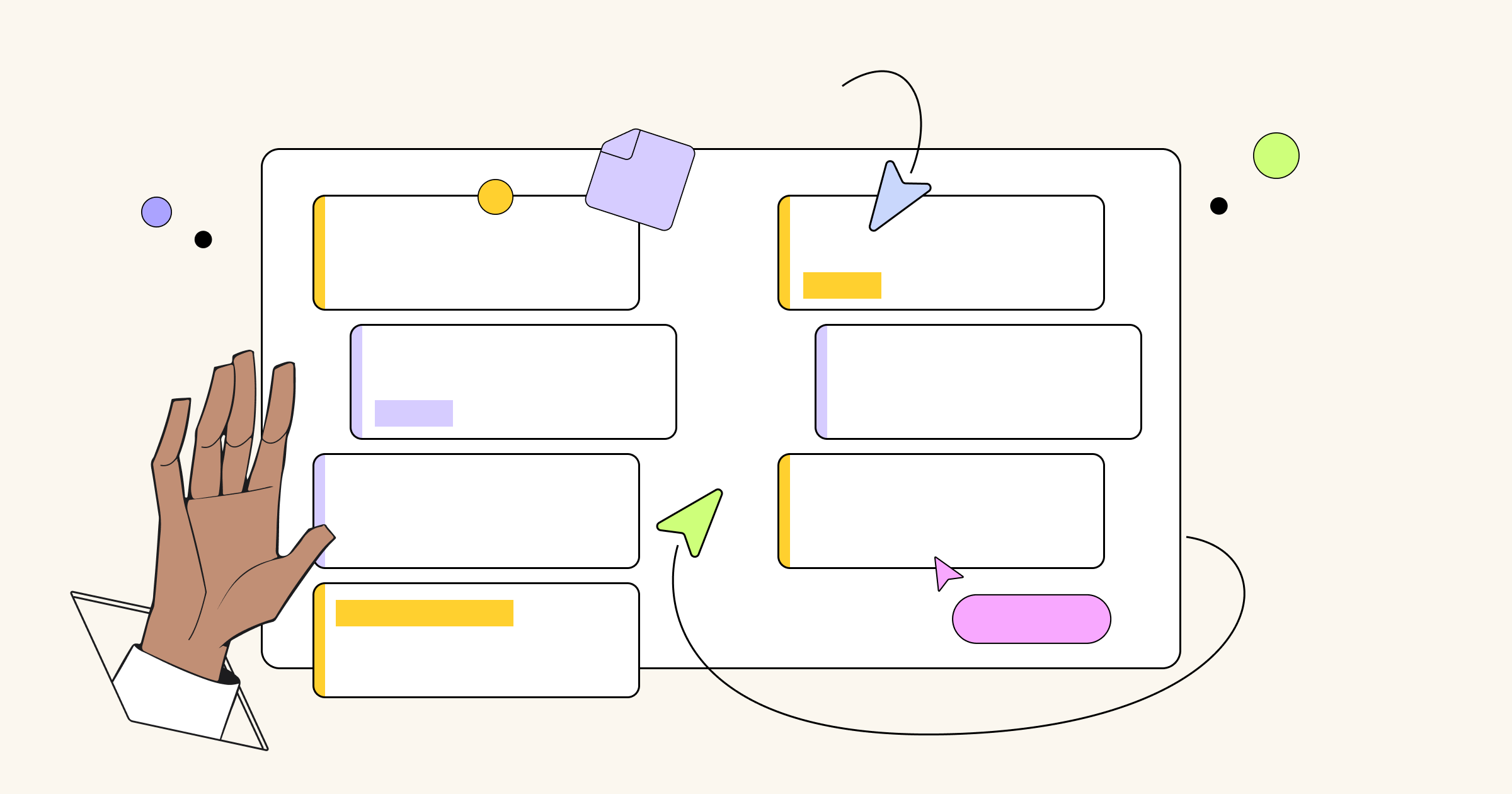The business world is full of contradictions. On one hand, everyone’s hungry for the next big thing. On the other, the thought of taking risks makes leaders sweat. Even though nearly all of them agree that companies have to innovate — 98%, to be exact — it’s not that simple.
There’s no doubt about it: innovation and uncertainty go hand in hand. Teams take risks when pursuing new ideas. Leaders take risks when they give the green light. And companies take the risk that they’re bringing the right thing to market at the right time. But that’s also the beauty of it — and what makes the process so rewarding (and even fun). The key is to empower an organizational culture where everyone can weigh in to solve the problems at hand, minimize those risks where possible, and generate maximum impact.
So how do we do that? At Miro, we want to help teams crack the code by showing them ways to work smarter, not harder. It’s about teamwork, making stuff that customers want, and cutting through the nonsense to get it done efficiently. We teamed up with AWS to put together a guide that lays out the moves for getting ahead, cutting through the noise, and setting new records in making cool things happen.
In this article, we’ll take insights from our latest Innovation in Product Development report and break down product teams’ challenges, introduce solutions, share what successful teams do, and discuss the role of AI in innovation.
Collaboration (or lack thereof) is one of innovation’s greatest hurdles
You can’t have innovation without collaboration. Collaboration may sound easy, but many (or even most) organizations struggle to get it right, both with their employees and their technology.
You need mutual understanding
Co-creating a new product requires a close partnership between specific functions. In organizations with collaborative cultures, teams work together by tapping into their unique skills and knowledge to create maximum overall impact. It isn’t just a creator and reviewer relationship, but one based on the understanding that each function is crucial to the project’s success.
Transparency
For successful collaborations, all teams need to understand the ‘why’ and the ‘what’ of the project from the start — and this is an ongoing process, not a one and done. From kickoffs to updates and milestones throughout, transparency ensures that teams can stay focused, aligned, and on top of their game. This is key for both leaders and team members; the more inclusive the teams are, the better equipped they are to stay aligned on solving business problems. This also helps them stay open and flexible to any bumps in the road, rather than being overly prescriptive.
Tools that help you work together, better
Now let’s turn to the tech side of collaboration. Growing organizations often need help bringing product design and engineering teams together, especially when using legacy tools not built for virtual collaboration — and this is even more challenging for distributed teams.
Many business leaders we surveyed reported feeling that their companies are behind the times: 31% say technology is a barrier to innovation, and 40% say legacy tech stifles creativity and limits productivity. That’s why businesses need access to advanced diagramming tools and visual workspaces, which provide a shared space for laying out the big picture, and contextualizing data and processes. Showcasing complex systems in easy-to-understand formats, these tools can enhance understanding and promote agile decision-making across teams.
And what kind of Chief Product & Technology Officer would I be if I didn’t tell you that Miro has the best collaborative development tools on the market? Check us out if you aren’t already using us for work. If your company uses AWS, jump right in with our three month business plan trial.
To stay relevant, make AI work for you
AI has emerged as a powerful ally in product development, reshaping traditional methodologies and catapulting processes into new realms of efficiency and innovation. Today, 35% of product teams already harness AI to streamline their workflows, enhancing both the speed and quality of their outputs.
Last year, Deepam Mishra, an AI expert and senior advisor to startups for AWS shared five key areas where AI and automation are making significant inroads:
- Fine-tuning product-market fit predictions through advanced data analytics
- Accelerating the iteration cycle
- Transforming customer feedback analysis
- Expediting employee training
- Fostering a culture of creativity by significantly reducing time spent on repetitive tasks
So, how can product developers and designers leverage AI for a competitive edge? Generative AI, in particular, is the most high-profile asset because of its ability to conduct thorough product analyses, offer ongoing usability enhancements, and refine the concept phase of product development. This is why tools like Miro Assist are so groundbreaking for helping teams and organizations become more efficient, productive, and innovative.
Put your people first
To understand the future of innovation, we need to shift from a tools-first perspective to one that places teams at the center. While using the latest tools will certainly help support your innovation journey, it’s critical to remember that tools are only one piece of the puzzle.
Timelines
Despite having the tools needed, our report found that 95% of product teams fail to ship new features on agreed-upon timelines due to organizational issues. If you’re facing this challenge, you don’t need to upgrade your systems, you need to rethink how your team is using them.
The solution here is to adopt Agile project management best practices. When consistently implemented, they can improve operational processes and decision-making speed, and increase customer satisfaction and employee engagement.
Data privacy
Product teams often need help maintaining data security and privacy while sharing workspaces across teams and stakeholders. That’s why trustworthy tools are essential throughout the development process. Enterprises need a solution that provides secure connections between multiple SaaS apps without coding, ensuring that customer data and proprietary information stay secure.
But tools are only part of the equation. In order to unlock innovation, teams must be able to work together freely without worrying about what information should be kept private. To facilitate this, organizations should empower teams to share openly and transparently — and give the peace of mind that there’s little risk in doing so.
Searchability
How long does it take you and others on your team to find data and project resources? Too long, according to our latest survey.
Less than a third of leaders say they know exactly how and where to find the data to support their work. And get this: A quarter of product professionals told us it takes up to three hours to find what they’re looking for. That’s not okay. It’s time for shared, searchable knowledge hubs that integrate with data sources. This approach facilitates accurate decision-making based on up-to-date information necessary for building products.
What the future holds for product development
The future of product development will be shaped by an evolving work landscape, moving decisively toward distributed teams with hybrid and remote environments as the new norm. This transition necessitates an increased focus on cultivating a remote-friendly culture and enhancing collaboration by strategically deploying tools to keep everyone in sync.
To meet the needs of increasingly dispersed teams, it’s more important than ever to use adaptable, flexible project management frameworks that can keep everyone aligned on goals, processes, and big-picture thinking. Collaboration is critical to success and AI will support us on this journey — and, while today’s cutting-edge tools support innovation in new ways, always remember that great work comes down to the people doing it.
Check out the full report for more insights on efficiency, privacy, customer feedback, and other top-of-mind topics for product leaders and teams.




